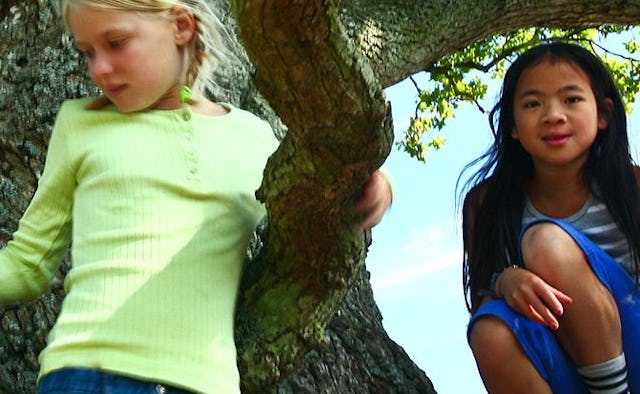In Silicon Valley, Even the Second-Graders Have Jobs

At the end of the playground is a row of about seven or eight trees. Each tree represents a different store. And the children take on different roles, from store owners to employees to customers.
Some storefronts are more valuable than others, depending on location, size of lot, and the items they sell. Each store sells a different item, such as pinecones or twigs. Some store owners periodically “reinvent” the pinecone, trying to put a new spin on it, with varying degrees of success. According to my daughter, some kids try to sell pinecones by saying they are good for playing games versus just collecting; others try to promote the special sap-laden pine cones as ones that help you gather pine needles more quickly, to the extent you need that valuable resource! Others try to innovate, collecting area flowers and harvesting the bee pollen.
Currency is set by “basic supply and demand,” according to these kids, with your average pinecone not worth as much as something that’s processed, like bee pollen, and the most scarce or popular items costing more than the multitude of twigs just lying around the playground.
A child achieves store ownership in one of two ways. Some stores are handed down to the new owner as an old owner graduates. Others work their way up the playground ladder by working in the store and “making partner.” Some kids have tried to start their own stores away from the tree line, but found that the remote location made it difficult to attract customers. I’m sure there’s an app for that…
In any event, store owners and employees are working quite hard to keep these stores in operation, and personnel disputes often result. Some employees get fired. If this happens to you, it’s unlikely you find another job, because it’s a pretty close-knit storeowner community. Off to the handball court you go. Other employees leave their jobs to work in different stores with better or more interesting career prospects, to become customers, or to go and pursue their dreams of becoming this month’s tetherball champion.
“I didn’t like my job, so I quit,” answered a friend of mine’s disgruntled second grader after a particularly hard day at recess, responding to the innocent question, “So what did you do today at school?” It turns out her boss was a micro-manager who always wanted the pine cones arranged in a very particular way, and wouldn’t listen to anyone else’s ideas about how to make the store more competitive with the one selling rocks next door. So she went on to greener pastures. Literally. She now plays soccer.
The kids also know that certain customers can make or break a store’s success. “If you can get [Jenny] to buy your stuff, everyone starts buying it,” said my daughter. “But if she says it’s bad, no one will ever come. You have to make sure your store is set up really well for her when she comes to visit.” But don’t worry, there are children who are what we’d call “contract-to-hire,” who float around the stores, improving customer experience, product development, or their rudimentary yet sophisticated advertising.
Parents and faculty I’ve spoken with have called the phenomenon anywhere from “quirky” or “hysterical” to “bizarre” or “ridiculous.” I think it’s all of those. It takes experiential learning to a whole new level. I’m curious: do other schools in the Silicon Valley region have similar play? Do New York City schools have trading floors on the classroom carpets during rainy days? Do DC kids debate playground rules or advocate for better jungle gyms?
On a more serious note, what’s going on in the rest of the country and the world, and what are the implications?
This article was originally published on